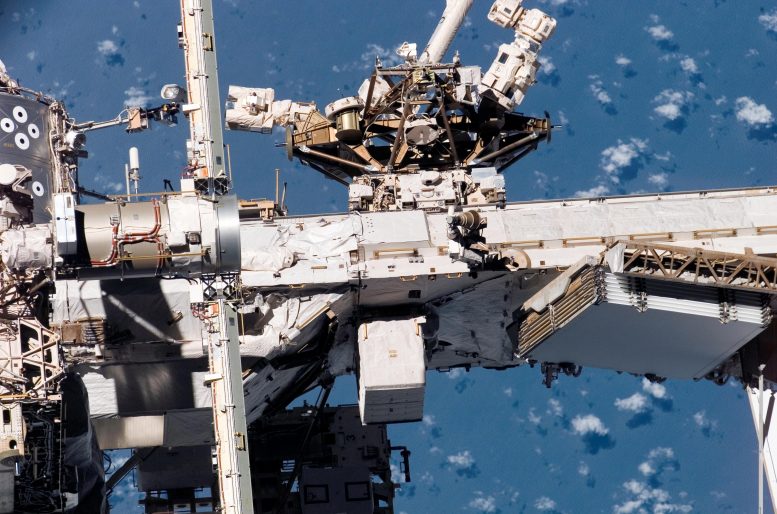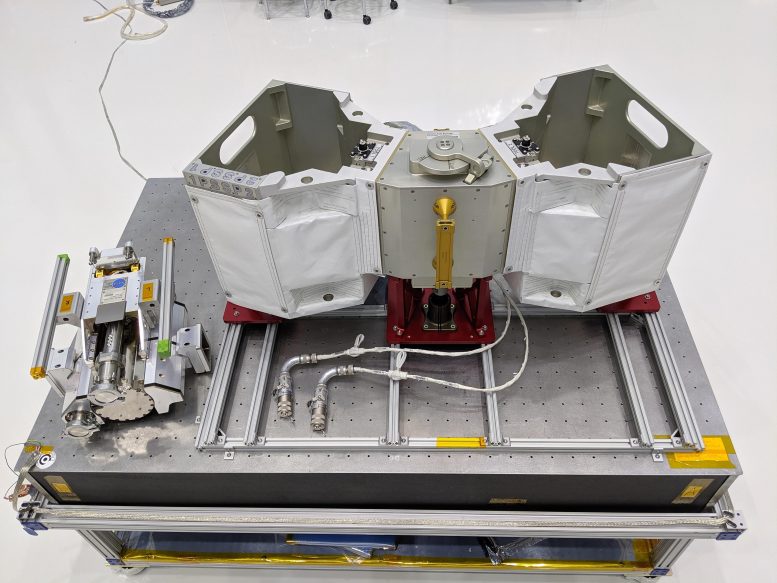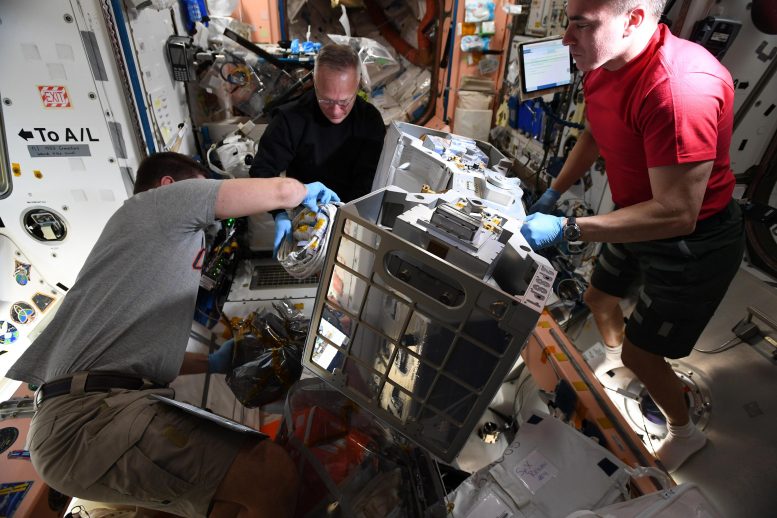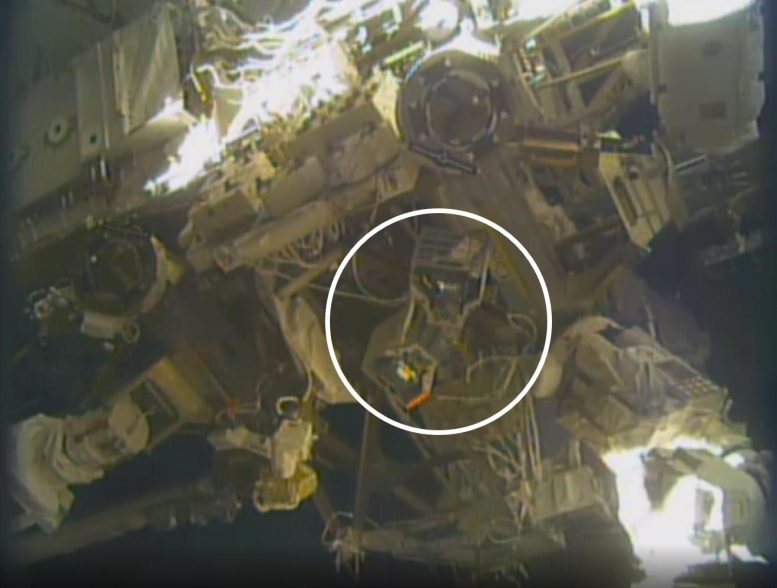C3.ai Digital Transformation Institute awards $5.4 million to top researchers to steer how society responds to the pandemic.

Artificial intelligence has the power to help put an end to the Covid-19 pandemic. Not only can techniques of machine learning and natural language processing be used to track and report Covid-19 infection rates, but other AI techniques can also be used to make smarter decisions about everything from when states should reopen to how vaccines are designed. Now, MIT researchers working on seven groundbreaking projects on Covid-19 will be funded to more rapidly develop and apply novel AI techniques to improve medical response and slow the pandemic spread.
Earlier this year, the C3.ai Digital Transformation Institute (C3.ai DTI) formed, with the goal of attracting the world’s leading scientists to join in a coordinated and innovative effort to advance the digital transformation of businesses, governments, and society. The consortium is dedicated to accelerating advances in research and combining machine learning, artificial intelligence, internet of things, ethics, and public policy — for enhancing societal outcomes. MIT, under the auspices of the School of Engineering, joined the C3.ai DTI consortium, along with C3.ai, Microsoft Corporation, the University of Illinois at Urbana-Champaign, the University of California at Berkeley, Princeton University, the University of Chicago, Carnegie Mellon University, and, most recently, Stanford University.
The initial call for project proposals aimed to embrace the challenge of abating the spread of Covid-19 and advance the knowledge, science, and technologies for mitigating the impact of pandemics using AI. Out of a total of 200 research proposals, 26 projects were selected and awarded $5.4 million to continue AI research to mitigate the impact of Covid-19 in the areas of medicine, urban planning, and public policy.
The first round of grant recipients was recently announced, and among them are five projects led by MIT researchers from across the Institute: Saurabh Amin, associate professor of civil and environmental engineering; Dimitris Bertsimas, the Boeing Leaders for Global Operations Professor of Management; Munther Dahleh, the William A. Coolidge Professor of Electrical Engineering and Computer Science and director of the MIT Institute for Data, Systems, and Society; David Gifford, professor of biological engineering and of electrical engineering and computer science; and Asu Ozdaglar, the MathWorks Professor of Electrical Engineering and Computer Science, head of the Department of Electrical Engineering and Computer Science, and deputy dean of academics for MIT Schwarzman College of Computing.
“We are proud to be a part of this consortium, and to collaborate with peers across higher education, industry, and health care to collectively combat the current pandemic, and to mitigate risk associated with future pandemics,” says Anantha P. Chandrakasan, dean of the School of Engineering and the Vannevar Bush Professor of Electrical Engineering and Computer Science. “We are so honored to have the opportunity to accelerate critical Covid-19 research through resources and expertise provided by the C3.ai DTI.”
Additionally, three MIT researchers will collaborate with principal investigators from other institutions on projects blending health and machine learning. Regina Barzilay, the Delta Electronics Professor in the Department of Electrical Engineering and Computer Science, and Tommi Jaakkola, the Thomas Siebel Professor of Electrical Engineering and Computer Science, join Ziv Bar-Joseph from Carnegie Mellon University for a project using machine learning to seek treatment for Covid-19. Aleksander Mądry, professor of computer science in the Department of Electrical Engineering and Computer Science, joins Sendhil Mullainathan of the University of Chicago for a project using machine learning to support emergency triage of pulmonary collapse due to Covid-19 on the basis of X-rays.
Bertsimas’s project develops automated, interpretable, and scalable decision-making systems based on machine learning and artificial intelligence to support clinical practices and public policies as they respond to the Covid-19 pandemic. When it comes to reopening the economy while containing the spread of the pandemic, Ozdaglar’s research provides quantitative analyses of targeted interventions for different groups that will guide policies calibrated to different risk levels and interaction patterns. Amin is investigating the design of actionable information and effective intervention strategies to support safe mobilization of economic activity and reopening of mobility services in urban systems. Dahleh’s research innovatively uses machine learning to determine how to safeguard schools and universities against the outbreak. Gifford was awarded funding for his project that uses machine learning to develop more informed vaccine designs with improved population coverage, and to develop models of Covid-19 disease severity using individual genotypes.
“The enthusiastic support of the distinguished MIT research community is making a huge contribution to the rapid start and significant progress of the C3.ai Digital Transformation Institute,” says Thomas Siebel, chair and CEO of C3.ai. “It is a privilege to be working with such an accomplished team.”
The following projects are the MIT recipients of the inaugural C3.ai DTI Awards:
“Pandemic Resilient Urban Mobility: Learning Spatiotemporal Models for Testing, Contact Tracing, and Reopening Decisions” — Saurabh Amin, associate professor of civil and environmental engineering; and Patrick Jaillet, the Dugald C. Jackson Professor of Electrical Engineering and Computer Science
“Effective Cocktail Treatments for SARS-CoV-2 Based on Modeling Lung Single Cell Response Data” — Regina Barzilay, the Delta Electronics Professor in the Department of Electrical Engineering and Computer Science, and Tommi Jaakkola, the Thomas Siebel Professor of Electrical Engineering and Computer Science (Principal investigator: Ziv Bar-Joseph of Carnegie Mellon University)
“Toward Analytics-Based Clinical and Policy Decision Support to Respond to the Covid-19 Pandemic” — Dimitris Bertsimas, the Boeing Leaders for Global Operations Professor of Management and associate dean for business analytics; and Alexandre Jacquillat, assistant professor of operations research and statistics
“Reinforcement Learning to Safeguard Schools and Universities Against the Covid-19 Outbreak” — Munther Dahleh, the William A. Coolidge Professor of Electrical Engineering and Computer Science and director of MIT Institute for Data, Systems, and Society; and Peko Hosoi, the Neil and Jane Pappalardo Professor of Mechanical Engineering and associate dean of engineering
“Machine Learning-Based Vaccine Design and HLA Based Risk Prediction for Viral Infections” — David Gifford, professor of biological engineering and of electrical engineering and computer science
“Machine Learning Support for Emergency Triage of Pulmonary Collapse in Covid-19” — Aleksander Mądry, professor of computer science in the Department of Electrical Engineering and Computer Science (Principal investigator: Sendhil Mullainathan of the University of Chicago)
“Targeted Interventions in Networked and Multi-Risk SIR Models: How to Unlock the Economy During a Pandemic” — Asu Ozdaglar, the MathWorks Professor of Electrical Engineering and Computer Science, department head of electrical engineering and computer science, and deputy dean of academics for MIT Schwarzman College of Computing; and Daron Acemoglu, Institute Professor

 RELL Engineering Development Unit (left) pictured alongside RiTS. Credit: NASA
RELL Engineering Development Unit (left) pictured alongside RiTS. Credit: NASA


